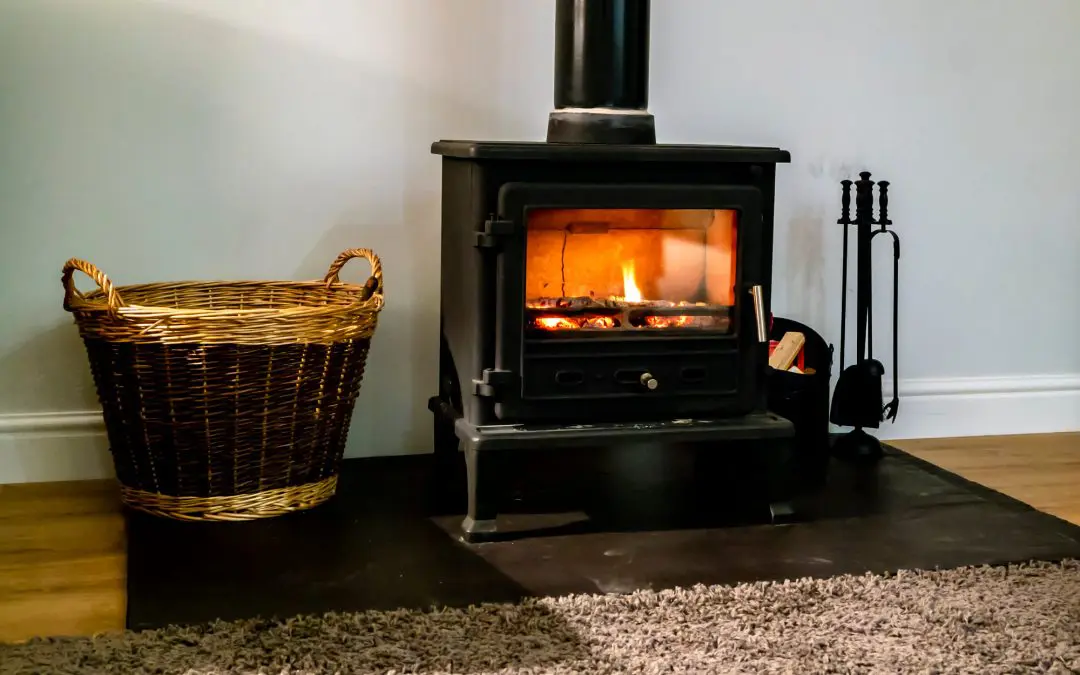Wood stoves offer both a functional heat source and an aesthetically pleasing focal point in any home. However, to enjoy its full benefits, you need to know the basics of using a wood stove properly. Whether you’re new to wood stoves or a seasoned user, these tips will help you keep your home safe, your stove efficient, and your wood supply well-managed.
Choosing the Right Firewood When Using a Wood Stove
One of the key factors in successfully using a wood stove is selecting the right firewood. The type of wood you burn significantly impacts the efficiency and heat output of your stove. Hardwoods like oak, maple, and hickory are ideal because they burn hotter and longer compared to softwoods like pine or fir. Additionally, make sure the firewood is properly seasoned. Seasoned wood has been allowed to dry out for at least six months to a year, which helps it burn cleaner and more efficiently. Freshly cut wood, or “green wood,” contains too much moisture, leading to a smoky fire and excessive creosote buildup in your chimney.
Building a Fire for Maximum Heat Output
Building your fire correctly is essential for getting the most out of your wood stove. Start by placing smaller kindling or wood shavings at the base, which will ignite more easily than large logs. On top of the kindling, place small to medium-sized pieces of seasoned wood. Leave enough space between the logs for air to circulate, as proper airflow is crucial to keeping the fire burning efficiently. Once the fire has a strong base, you can gradually add larger logs to maintain a steady, even heat.
Maintaining Proper Airflow
Airflow is a critical component of your wood stove’s performance. Most wood stoves are equipped with adjustable air vents that regulate how much oxygen reaches the fire. When starting a fire, keep the air vent open to provide maximum airflow and encourage quick ignition. As the fire begins to grow, you can gradually close the air vent to slow down the burn and retain heat within the stove. However, never close the vent completely, as this will suffocate the fire and produce smoke, leading to creosote buildup and a less efficient burn.
Managing Creosote Buildup While Using a Wood Stove
One of the main safety concerns with wood stoves is creosote, a byproduct of burning wood that can accumulate inside your chimney. If not managed, creosote can ignite and cause chimney fires. To minimize creosote buildup, ensure you’re only burning seasoned wood and that your fire has sufficient airflow. Burning at high temperatures also helps prevent creosote from condensing inside the chimney. Additionally, it’s crucial to have your chimney inspected and cleaned at least once a year, especially before winter, when the stove will be used frequently.
Maintaining Stove Efficiency
Regular maintenance will help keep your wood stove operating efficiently. Empty the ash pan regularly, as a buildup of ash can restrict airflow and reduce heat output. However, leaving a thin layer of ash at the bottom of the stove can actually improve the efficiency of your next fire by helping insulate the base. Check the stove’s door seals for wear and tear, as well. A stove that doesn’t seal properly will allow heat to escape and reduce its overall efficiency.
Positioning for Optimal Heat Distribution
The placement of your wood stove can have a big impact on how effectively it heats your home. Ideally, place your stove in a central area, allowing the heat to spread more evenly throughout your home. Make sure there’s enough space around the stove for proper ventilation, and consider using fans to help circulate the warm air. Ceiling fans set on low can help push heat back down into the living space, making your home feel warmer without having to overload the stove with wood.
Operating Your Stove Safely
Safety should always be a top priority when using a wood stove. Install smoke detectors and carbon monoxide detectors near the stove to alert you to any issues. Always use a stove thermometer to monitor the stove’s temperature, ensuring it doesn’t overheat. Avoid overloading the stove with wood, as this can cause the fire to burn too hot, leading to potential damage or fire hazards. When handling the stove, always use stove gloves or other protective equipment to avoid burns.
Children and pets should be kept a safe distance from the wood stove to prevent accidental burns. Installing a safety gate around the stove can create a barrier without disrupting the heat flow. Additionally, never leave the stove unattended for long periods, especially when the fire is roaring, as it could lead to dangerous situations if the fire gets out of control.
Storing Firewood Correctly
How you store your firewood is as important as the type of wood you burn. Store your firewood in a dry, well-ventilated area to prevent moisture accumulation. Stack the wood off the ground and cover the top to protect it from rain and snow, but leave the sides open for air circulation. Avoid storing wood too close to the house, as this can attract pests like termites, which may eventually find their way into your home. Storing a small amount of wood indoors, close to the stove, is convenient for immediate use, but keep the larger stockpile outside.
Using a wood stove can be a great way to heat your home efficiently while enjoying the cozy ambiance of a wood fire. By selecting the right firewood, managing airflow, and maintaining the stove regularly, you can ensure that your wood stove operates safely and effectively. Keeping these tips in mind will extend the life of your stove and enhance the comfort and warmth of your home during the colder months.
FAQs on Using a Wood Stove
Can I install a wood stove in a mobile home or RV?
Yes, wood stoves can be installed in mobile homes and RVs, but they must meet strict safety guidelines due to the smaller, enclosed spaces. Look for stoves specifically designed for mobile homes or RV use. These units often have built-in fresh air intakes and are designed to prevent carbon monoxide buildup. Ensure that the stove is securely fastened, with proper heat shields and clearances, to prevent accidents while traveling or living in the space. Always consult with a professional to ensure that your installation is compliant with regulations.
How can I reduce ash and soot buildup around my home?
To minimize ash and soot buildup inside your home, use properly seasoned hardwoods, as they produce less ash than softwoods. When cleaning ash from the stove, wait until it cools completely, then use a metal ash can with a lid to store the ashes. Consider using a high-efficiency vacuum cleaner designed for ash removal. Outside, direct the chimney away from windows and outdoor living spaces to prevent soot from settling around your property. Regular chimney cleaning also helps reduce soot emissions.
Can I use a wood stove as my primary heat source for my home?
Yes, many homeowners rely on wood stoves as a primary heat source, especially in rural or off-grid areas. However, it’s important to assess your home’s layout and insulation. A wood stove may not effectively heat every room, particularly in larger homes or multi-story buildings. You may need to use fans or other methods to distribute heat throughout your home. It’s also a good idea to have a backup heating source, such as electric or gas heaters, for extremely cold weather or situations when you’re unable to tend the fire.
Do I need special insurance for my wood stove?
Yes, you should notify your home insurance provider if you have a wood stove, as it may affect your policy. Insurance companies typically require that your stove be installed professionally and inspected to meet local building codes. Because wood stoves carry a higher fire risk, some policies may charge higher premiums, or you may need to add a specific rider to cover any potential damages. Failing to disclose the stove to your insurer could void your coverage in the event of a fire.
Wild Rose Property Inspection provides home inspection services to customers in the Alberta area. Contact us to schedule an appointment.

